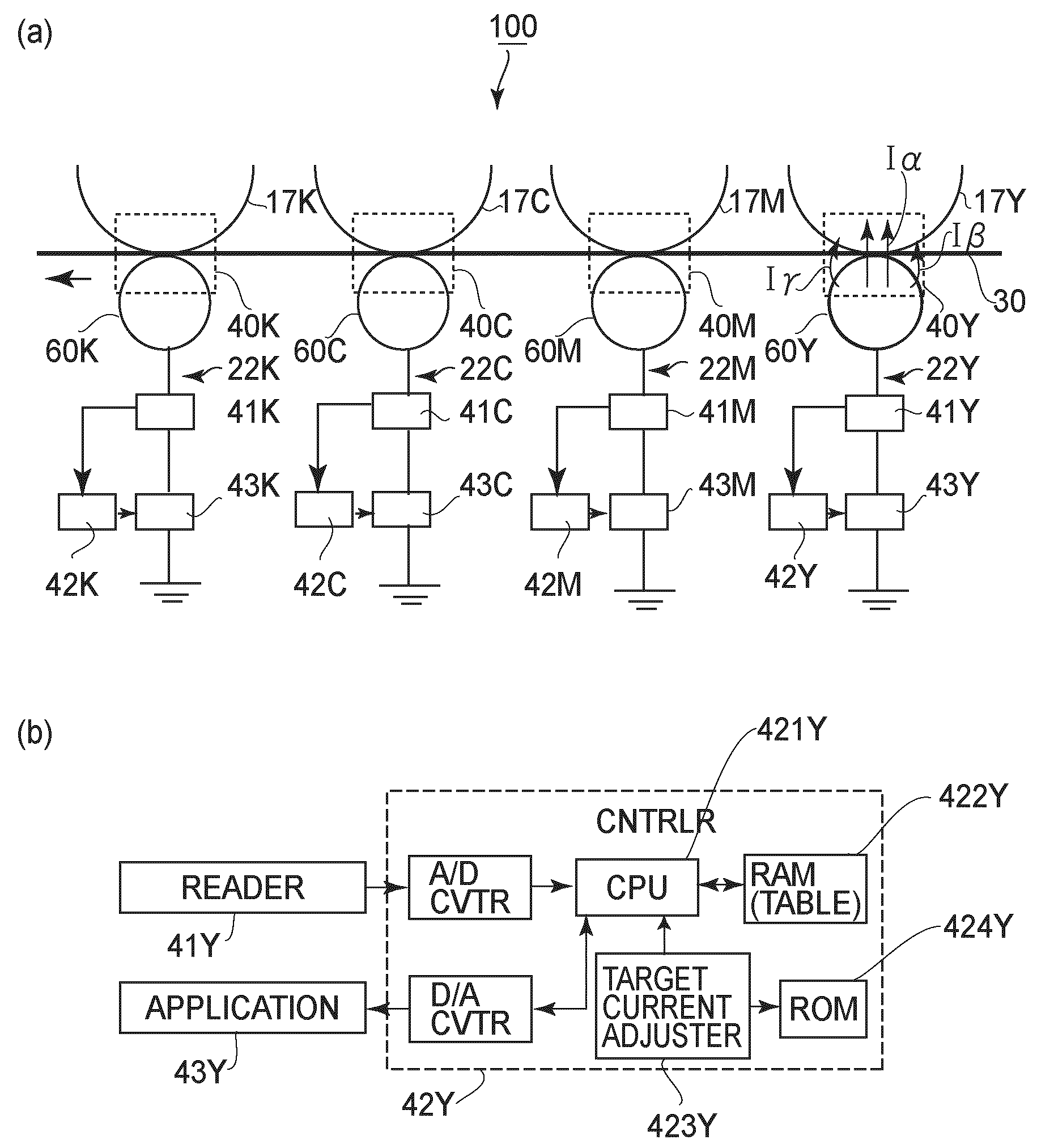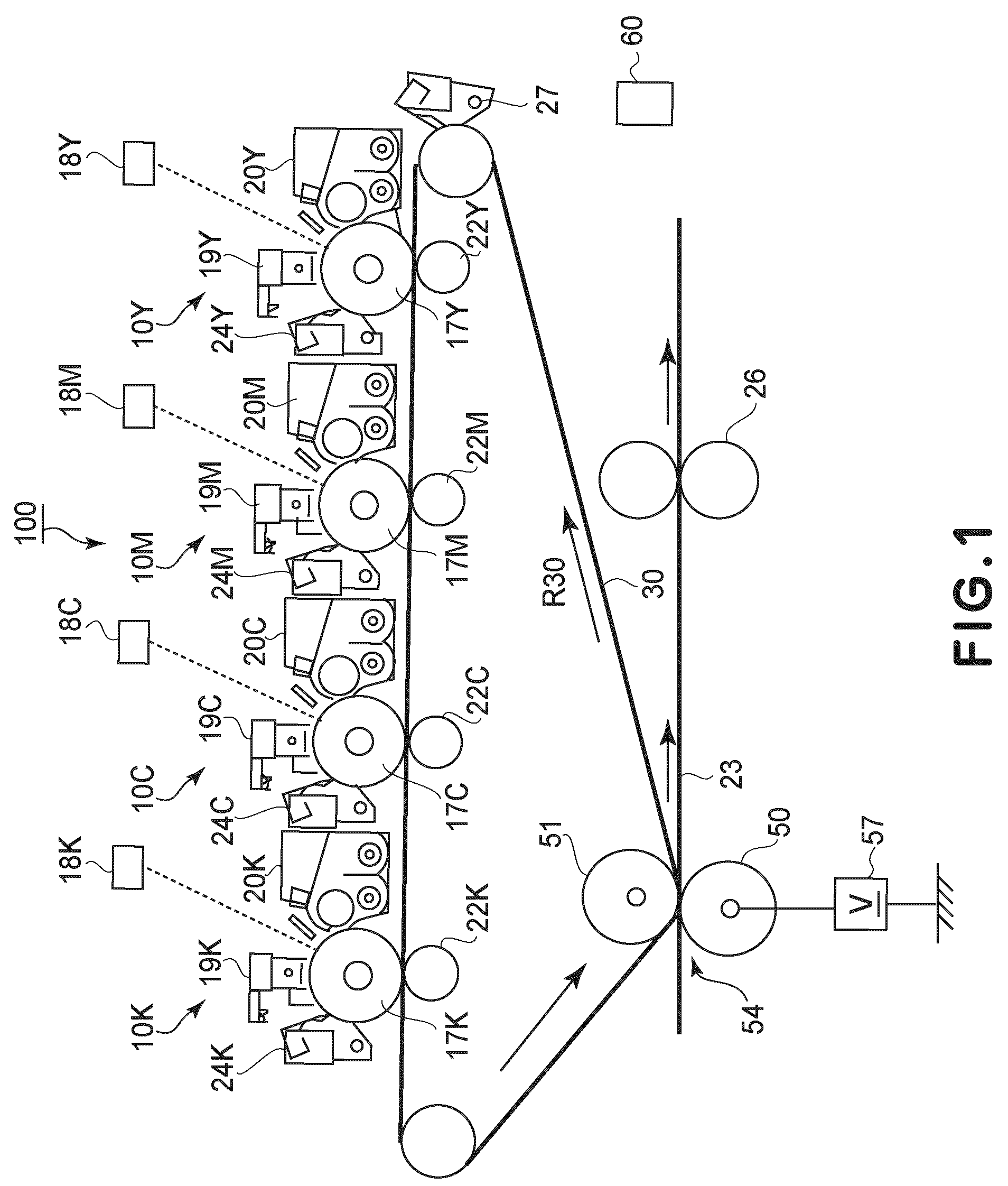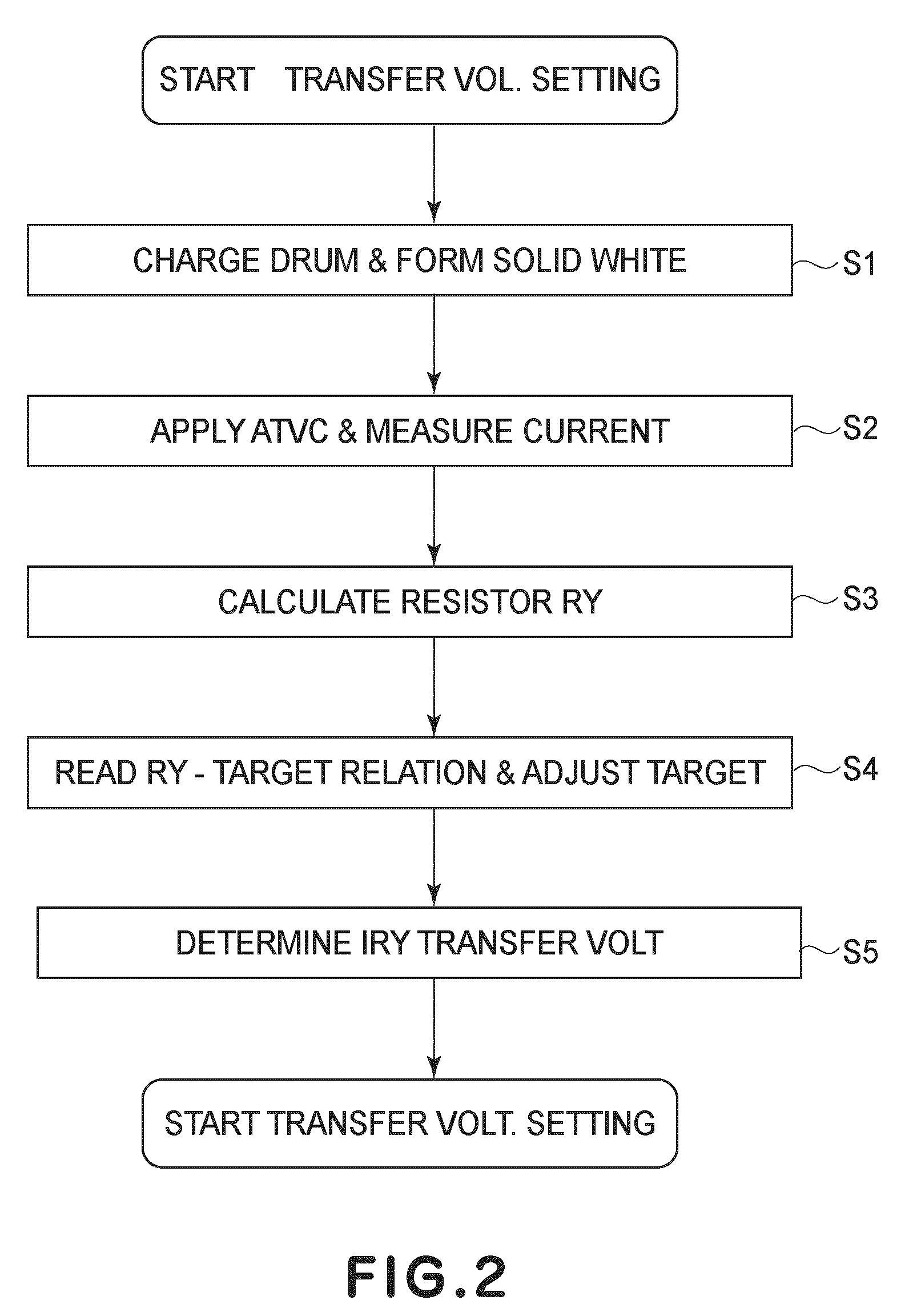Image forming apparatus
a technology of image forming apparatus and transfer apparatus, which is applied in the direction of electrographic process apparatus, instruments, optics, etc., can solve the problems of unsatisfactory image transfer, unsatisfactory image transfer, and unsatisfactory image transfer
- Summary
- Abstract
- Description
- Claims
- Application Information
AI Technical Summary
Benefits of technology
Problems solved by technology
Method used
Image
Examples
embodiment 1
[0045]FIG. 5 is a rough drawing of the original of the solid white pattern used for ATVC. FIG. 6 is a graph showing the relationship between the amount of the voltage (for ATVC sequence) applied to the primary transfer portion, and the amount of current which flowed through the primary transfer portion. FIG. 7 is a graph showing the relationship between the electrical resistance of the primary transferring portion, and the lapse of time. FIG. 8 is a graph showing the relationship between the measured amount of transfer current and the transfer efficiency, which is used for optimizing the amount by which the transfer current is to be flowed through the primary transfer portion.
[0046]Referring to FIG. 3(a), the primary transfer voltage controlling portion (controlling means) 42Y, 42M, 42C, and 42K control the primary transfer voltage applying portions (voltage applying means) 43Y, 43M, 43C, and 43K, respectively. The primary transfer voltage controlling portions 42Y, 42M, 42C, and 42K...
embodiment 2
[0088]Referring to FIG. 4, a secondary transferring apparatus 53 is made up of an outside secondary transfer roller 50 and an inside second transfer roller 51 (member for backing up intermediary transferring member), which are kept pressed against each other with an intermediary transferring member 30 (which is in the form of an endless belt) sandwiched between the two rollers, forming thereby a secondary transfer nip between the intermediary transferring member 30 and the outside secondary transfer roller 50 and intermediary transferring member 30. As a secondary transfer voltage applying portion 57 (electrical bias providing means) applies voltage (secondary transfer voltage) to the outside secondary transfer roller 50 (transferring member), the toner image(s) on the intermediary transfer belt 30 is transferred (secondary transfer) onto the recording medium 23 (transfer medium) on the intermediary transfer belt 30. Incidentally, the secondary transfer roller 51 is grounded.
[0089]F...
embodiment 3
[0113]In the second embodiment, Table 2 was created so that the amount by which the transfer current is to be flowed in the ATVC sequence is optimized in response to the change in the resistance R2 of the secondary transferring portion 54. However, the amount by which transfer current flows through the secondary transferring portion 54 is also affected by the amount of toner charge per unit amount of toner, which is substantially affected by the change in the ambient condition. In this embodiment, therefore, the target value for the transfer current for the ATVC sequence is set in accordance with the resistance of the transferring portion and the change in the ambience so that an optimal amount of transfer current will flow through the transferring portion, as shown in Table 3.
[0114]
TABLE 3R2 (×108 Ω)It2(μA)−1.0−1.5−2.0−2.5. . .−4.0−4.5−5.0High58545047. . .403836Mid.68646057. . .504846Low75706562. . .555350
[0115]In terms of the structure of the secondary transferring portion 54, the...
PUM
 Login to View More
Login to View More Abstract
Description
Claims
Application Information
 Login to View More
Login to View More - R&D
- Intellectual Property
- Life Sciences
- Materials
- Tech Scout
- Unparalleled Data Quality
- Higher Quality Content
- 60% Fewer Hallucinations
Browse by: Latest US Patents, China's latest patents, Technical Efficacy Thesaurus, Application Domain, Technology Topic, Popular Technical Reports.
© 2025 PatSnap. All rights reserved.Legal|Privacy policy|Modern Slavery Act Transparency Statement|Sitemap|About US| Contact US: help@patsnap.com



